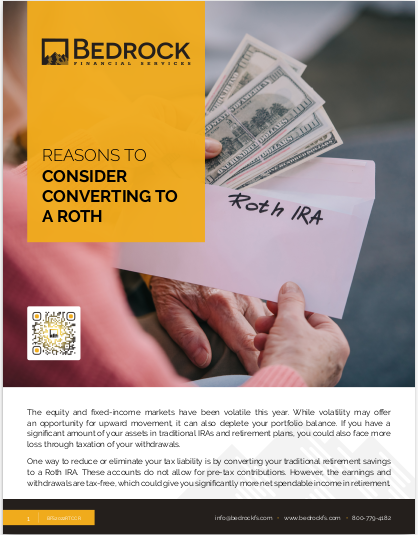Key Takeaways
-
A “trust loop” is not a one-time event but a continuous cycle of communication, delivery, feedback, and reinforcement that builds deep loyalty.
-
In 2025, financial professionals who prioritize transparency, timely updates, and personalized service at every client touchpoint are seeing the most long-term retention.
What Is a Trust Loop, and Why Does It Matter?
The trust loop is a cycle of consistent, intentional actions that earn and re-earn your client’s trust throughout your relationship. Unlike traditional client engagement models that emphasize a strong start and periodic check-ins, the trust loop centers on maintaining a seamless rhythm of value, communication, and validation.
A functional trust loop ensures:
-
Clients feel seen, heard, and valued continuously
-
You catch small issues before they become reasons to leave
-
Trust becomes self-reinforcing—clients come to expect reliability, and you keep delivering
Trust Begins Before the First Signature
Before a client even becomes a client, they begin forming perceptions about your trustworthiness. In the pre-engagement phase, your:
-
Website clarity and tone
-
Response time to inquiries
-
Transparency in describing services
-
Initial discovery process
…all signal whether you are someone who delivers what you promise.
In 2025, clients expect immediate acknowledgment and streamlined onboarding. A simple automated confirmation email or a brief welcome call can make the first impression last.
Loop Step 1: Clarity Sets the Foundation
Trust erodes quickly in confusion. Clients must understand:
-
What you will do for them
-
What you will not do
-
How communication will work
-
What fees they are responsible for
Be direct. Use plain language. Document these expectations in writing. When clients don’t have to guess, they feel secure.
Loop Step 2: Deliver What You Promised—Exactly When You Said You Would
Consistency is where most trust loops break. You don’t have to be flashy, just consistent:
-
Send the report when you said you would
-
Schedule the review meeting when it was due
-
Follow up when you promised to check in
In 2025, digital tools make this easier than ever. Set recurring calendar reminders, use client management platforms, and automate basic follow-ups. But don’t automate empathy—clients can tell the difference between a human check-in and a bot blast.
Loop Step 3: Create Small Wins That Reinforce Trust
You build trust in tiny moments more than big milestones. Regular wins help clients see you as an ongoing solution, not just a one-time transaction.
Consider these practices:
-
A quick message noting a positive market move relevant to their portfolio
-
A reminder of a tax-saving action you helped execute
-
A secure portal message about their year-to-date financial progress
When you demonstrate continued awareness of their goals, it reassures them you’re not “set it and forget it.”
Loop Step 4: Ask for Feedback, Then Act on It
Feedback isn’t about surveys—it’s about building the loop in both directions.
Ways to keep the loop open:
-
Ask clients, in meetings, what they find most valuable about your service
-
Invite honest criticism on what’s unclear or unnecessary
-
Make a visible change based on something a client said (and tell them so)
Doing this quarterly makes it routine rather than reactive. By 2025, most clients expect personalized service. Acting on feedback proves you’re not offering a one-size-fits-all experience.
Loop Step 5: Reinforce the Relationship—Even When There’s Nothing to Sell
Trust grows in the off-season. Clients remember who showed up when there was no agenda. Keep the connection alive by:
-
Sending personalized financial education or updates quarterly
-
Celebrating anniversaries of your client relationship
-
Sharing thoughtful check-ins during volatile markets
This isn’t about constant contact. It’s about meaningful, scheduled contact with no strings attached.
Loop Step 6: Use Data to Personalize Every Touchpoint
In 2025, data is no longer optional—it’s expected. Clients assume you have the tools to:
-
Track their goals
-
Anticipate their needs based on life stage
-
Adjust communications to their preferences (email, phone, in-person, portal)
Use what you know to tailor how and when you engage. Did they recently mention a college savings concern? Follow up on that proactively. Did they change jobs? Offer a rollover strategy. You become indispensable when your advice evolves with their life.
Loop Step 7: Close the Year with a Trust Reset
The end of the year is your trust audit. Don’t just send a performance report—send a recap of your partnership:
-
What did we set out to do?
-
What did we accomplish?
-
What did we adjust?
-
What are we planning next?
This closes one loop and starts the next. It shows progress, transparency, and intentionality. It reminds clients why they’re staying with you in 2026.
Trust Maintenance Over Years, Not Quarters
Many professionals still think in quarterly performance terms. But trust is a long game. When you build a loop system that renews itself every month, quarter, and year, you:
-
Reduce client anxiety
-
Prevent relationship decay
-
Turn clients into long-term advocates
You’re not just managing money—you’re managing peace of mind.
Signs Your Trust Loop Needs Attention
If you’re not sure whether your trust loop is functional, look for these indicators:
-
Clients ghost your review meeting invites
-
They ask repeat questions they should already know the answers to
-
You’re only hearing from them when something goes wrong
These are signals of disconnection. The solution is not necessarily more contact—it’s better, more consistent, and more personal contact.
When You Break Trust—Rebuild Intentionally
No professional is immune to mistakes. The difference is how you handle them. When something slips:
-
Acknowledge it early
-
Take responsibility without excuses
-
Explain how you’re fixing the process
-
Offer an extra touchpoint to re-center the relationship
This isn’t damage control—it’s loop repair. And when done right, it can actually deepen the client bond.
A Trust Loop Makes You Referable Without Asking
Clients refer professionals they trust. But trust alone isn’t enough—it has to be active and recent. When your trust loop is healthy, you:
-
Stay top of mind
-
Stay top of preference
-
Become someone they feel good about recommending
They don’t need a referral script—they just need a reason to talk about you. Your consistent, visible care gives them that reason.
Creating a Trust Loop That Works for You
Every financial professional has different bandwidth and communication styles. Your trust loop must reflect:
-
Your capacity for check-ins
-
Your preferred mix of automation vs. personal outreach
-
The tools you already use (CRM, email platform, meeting scheduler)
The goal isn’t to copy someone else’s client experience. The goal is to design a rhythm that works for you and your clients consistently.
Building Real Loyalty Starts Here
In 2025, building loyalty means designing a trust loop that evolves with your clients, not just impresses them at the start. You don’t have to be perfect—you just have to be predictably valuable.
If you’re ready to turn client relationships into long-term partnerships, we can help. At Bedrock Financial Services, we equip professionals like you with the tools, systems, and support to build trust loops that work. From automation that feels human to training that helps you deliver consistency, our platform is designed to make trust your most renewable asset.
Sign up today and see how we can help you strengthen the relationships that matter most.







